In the world of beekeeping, bee space refers to the space found inside a beehive, which plays a vital part in modern beekeeping as we know it today.
The bee space is 6.4mm (1/4”) to 9.5mm (3/8”). Spaces smaller than 6.4mm and bees will seal the space with propolis. Spaces greater than 9.5mm and bees will build wax combs. In beehives, the bee space provides efficient space for bees to efficiently move around and ensures frames can be easily removed from the hive.
In this post, we’ve done some in-depth research and thrown in our experience in beekeeping to explain all about the bee space.
The Ideal Bee Space
So what is the ideal bee space, you ask? It is a space of between 6.4mm (1/4”) to 9.5mm (3/8”) in a beehive which is considered to be ideal. Within this “bee space” bees will not build comb, nor will they close it with resin-like propolis.
The bee space enables bees to move freely and efficiently as they go about doing their routine work of taking care of the brood and queen as well as making honey or storing pollen in a hive.
This precise gap within a hive that bees won’t fill with wax or propolis is approximately the height of an adult bee. The smaller gaps are sealed with propolis to help regulate the temperature in the hive, keep the elements like rain out and keep out potential pests or threats like robber bees or yellow jackets.
Remember bees don’t need light, other than the little light near the entrance, the bees in a beehive work in total darkness.
Now that we know what the ideal bee space is, let’s go a little deeper and explain more on how it works and how it came to be used in modern beekeeping.
Bee Space Measurements
Top Bar Hive
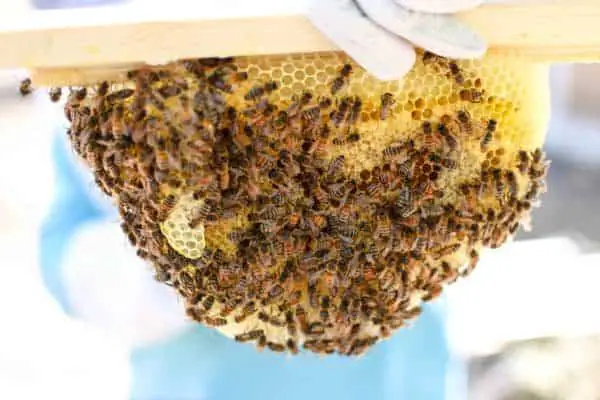
In top bar hives, the commonly accepted distance between brood frames is 32mm (1 1/4″), from the center of one top bar to the center of the next top bar. This leaves a bee space of about 6.4mm (1/4″).
With frames intended for honey, they are spaced at 38mm (1 1/2″). This leaves a distance between frames of 13mm (1/2″). The intention is for the bees to build the wax combs wider reducing the bee space back to between 6.4mm (1/4″) and 9.5mm (3/8″). This means the honeycombs are wider than the brood combs, allowing more storage capacity for honey.
Langstroth Hive
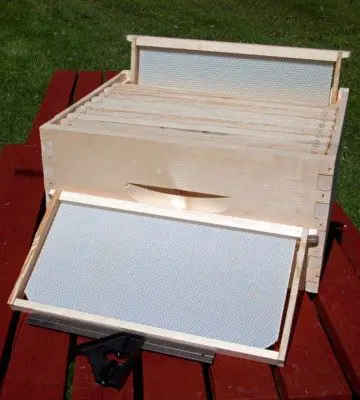
In a Langstroth hive, space separating each frame and the frames from all other hive parts would be 8mm (5/16”) or 9.5mm (3/8”) depending on the manufacturer. As spoken about earlier this is within the range of acceptable bee space.
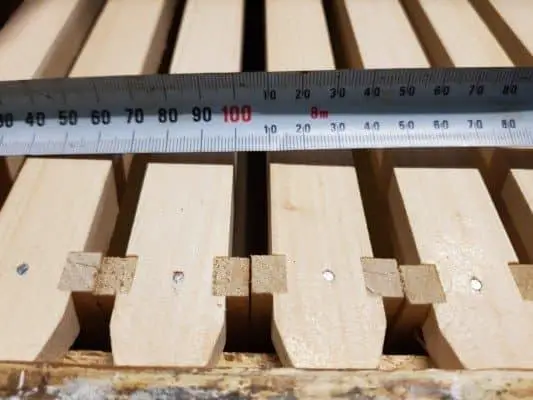
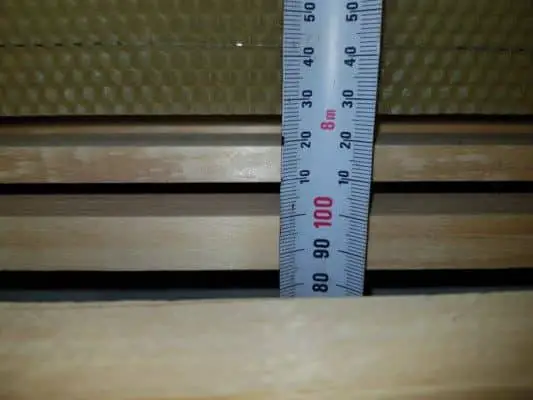
This spacing of 8mm (5/16″) is used throughout this Langstroth hive. The spacing between the ends of the frames and the wall of the box is also consistent. These images are of equipment we have used for decades now and we have very little issue with burr comb or propolis in these areas in our hives.
The Bee Space Concept
Who invented this concept?
Lorenzo Lorraine Langstroth
Born in 1810, Lorenzo Lorraine Langstroth was an American clergyman and teacher who is better known for his research and works as an apiarist, and is considered to be the Father of American beekeeping.
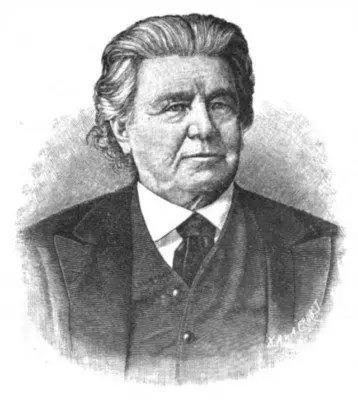
This minister from Philadelphia recognized and promoted the importance of bee space in improving the ease with which beekeepers could inspect or remove honey from beehives. Langstroth developed what is today the most efficient and commonly used beehive.
This type of beehive, most effectively, and with great efficiency, utilizes the bee space concept. It’s worth mentioning here that even before Langstroth came up with his beehive, another apiarist by the name of Jan Dzierzon was grappling with the same challenges beekeepers faced during those years.
Jan Dzierzon
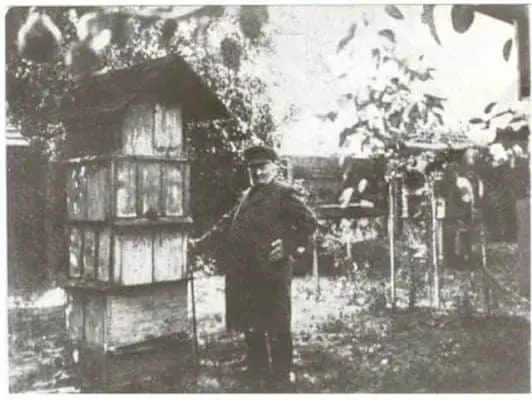
Jan Dzierzon was a 19th century Polish Roman Catholic priest who discovered and ascertained the correct spacing for top-bars in beehives. Initially, the top-bars were usually hung from strips of wood on the sides of Dzierzon’s hives.
Dzierzon introduced grooves into his hives’ walls replacing the wooden strips in 1848. He achieved this spacing out the grooves 8mm×8mm (5/16” × 5/16”). In doing so, Dzierzon had introduced the first bee space to a hive in which bees would happily move around and keep free from wax combs.
Lorenzo Langstroth acknowledged Dr. Dzierzon’s efforts and contribution to apiculture as is evident from correspondence from the two early pioneers of modern beekeeping. Dr.Dzierzon revolutionized beekeeping by coming up with the first successful movable-frame beehive.
Development Of The Bee Space Concept
Through much keenness, methodological observation, and experiments, Langstroth, learned all about the mechanics of beekeeping. He discovered what became the game-changer in modern beekeeping; bees would not build wax combs in a space smaller than 9.5mm (3/8″). The modern bee space is now recognized as having lower and upper limits 6.4mm (1/4″) and 9.5mm (3/8″) respectively. Spaces below 6.4mm (1/4″) don’t allow enough space for the bees to efficiently move around.
In summary, anything bigger, they would build a comb, and any smaller space, the bees would fill it with propolis. This is the concept and knowledge that he applied in his very efficient Langstroth beehives, which earned a patent on the design in 1852.
His book titled; Langstroth on the Hive and the Honey Bee: A Bee Keeper’s Manual, is a treasure trove of insights into beekeeping.
Locations of Bee Space Within a Beehive
When you open an assembled beehive, what catches the eye immediately is the neatness and exact spacing of the frames. The space separating each frame from the next one is a bee space.
The sides of the frames are one bee space from the wall side of the hive. The other bee space is between the top of any box and the next box on top of it. If you open a beehive lid and find a comb built on the underside, probably the bee space was more than the maximum upper bee space limit.
The distance from the top of the box to the underside of the lid is a bee space. In the brood area, a 9mm bee space between adjacent areas of capped brood allows two layers of bees to work back to back.
The different types of hive designs have what can be described as ‘top bee space’ and others as ‘bottom bee space’. The reason for this is that the internal components of the hive must retain bee space whilst ensuring that the outer box must be “bee tight” with no gaps.
Top bee space designs end up having a 6-8mm gap between frames in the box and the top edge of the box.
The frames are level with the bottom box and the bee space is at the top. Bottom bee space designs will have frames and the top of the box flush with the bee space provided at the bottom of the box.
Preserving bee’s space throughout the hive ensures bees are able to maintain a high level of colony hygiene and keep any predators at bay by making it difficult for them to find a place to hide.
What Happens if Bee Space is Too Big or Too Small?
If the bee space is violated, the resulting mayhem of a beehive that is glued all over inside, filled everywhere with combs, and can’t be inspected with ease, is a beekeeper’s nightmare!
Forcing the hive open and removing the glued frames ends up destroying the carefully built honeycombs and annoying the bees. It’s also quite messy because honey will spill from the broken combs.
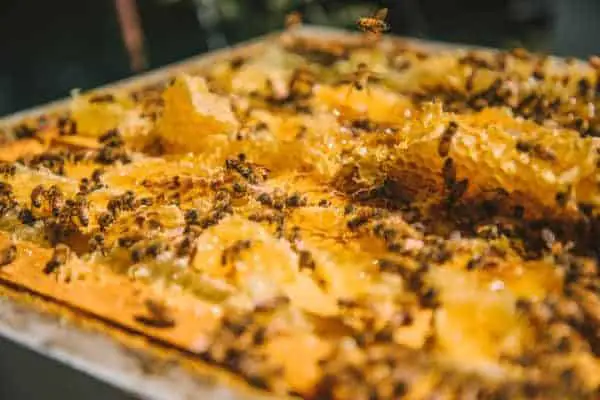
If any space in the hive is larger than 9.5mm (3/8”), bees will build excess comb. Bees will fill any space less than 6.4mm (1/4″) with propolis. A hive that is glued together on the inside is very difficult to manage properly and is prone to a lot of damage due to the difficulty in accessing and removing the frames.
It’s important to note that you can’t mix top space and bottom space equipment in the same hive. Each type of equipment must be in keeping with the minimum and maximum requirements of bee space.
If the two are mixed, you either end up with too big spaces that the bees build combs in or too small spaces that the bees fill with propolis.
In the United States and many other countries across the world, the top bee space configuration is standard. In the U.K. the Bottom bee space configuration is more common.
Why the Bee Space is so Important
When bees have easy access to all areas within the beehive, they work efficiently and are more productive. For the beekeeper, removing or replacing frames is easier. Moving bees to another hive without disturbing them or breaking combs become easier too.
Inspecting the hives is not a problem when the frames come out easily, so is collecting the honey. The bees are able to keep the colony clean because it becomes easy for them to access all areas within the hive.
The Wrap Up
Thinking about the importance of bee space at this point, you will realize that maybe not many people who are not into beekeeping would appreciate the critical role bee space plays in apiculture.
A beehive without the proper bee space configuration will simply not work efficiently for both the bees and the beekeeper. For DIY hive builders, this is probably food for thought.
Sources
https://en.wikipedia.org/wiki/Langstroth_hive
https://bee-health.extension.org/what-is-bee-space-and-why-is-this-important-to-beekeeping/
http://www.dave-cushman.net/bee/bsp.htmlbees4life.org
